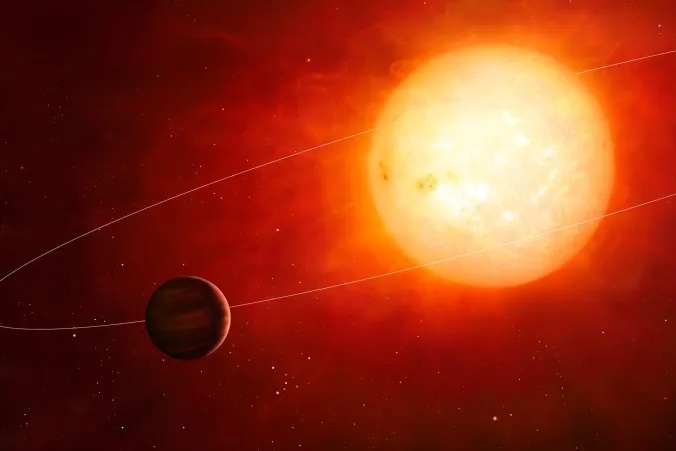A major shift in the search for life on other planets
An Earth-like planet named GJ 1252b orbiting an M dwarf — the most common type of star in the universe — appears to have no atmosphere at all. This discovery 1 could cause a major shift in the search for life on other planets. Because M-dwarfs are so ubiquitous, this discovery means a large number of planets orbiting these stars may also lack atmospheres and therefore are unlikely to harbour living things.

This planet orbits its star twice during the course of a single day on Earth. It is slightly larger than Earth, and it is much closer to its star than Earth is to the sun, making GJ 1252b intensely hot as well as inhospitable.
The pressure from the star’s radiation is immense, enough to blow a planet’s atmosphere away. Earth also loses some of its atmosphere over time because of the Sun, but volcanic emissions and other carbon cycling processes make the loss barely noticeable by helping replenish what is lost. However, in greater proximity to a star, a planet cannot keep replenishing the amount being lost.
In our solar system, this is the fate of Mercury. It does have an atmosphere, but one that is extremely thin, made up of atoms blasted off its surface by the Sun. The extreme heat of the planet causes these atoms to escape into space.
To determine that GJ 1252b lacks an atmosphere, astronomers measured infrared radiation from the planet as its light was obscured during a secondary eclipse. This type of eclipse occurs when a planet passes behind a star and the planet’s light, as well as light reflected from its star, is blocked.
The radiation revealed the planet’s scorching daytime temperatures, estimated to reach 1227 °C — so hot that gold, silver, and copper would all melt on the planet. The heat, coupled with assumed low surface pressure, led the researchers to believe there’s no atmosphere.
Even with a tremendous amount of carbon dioxide, which traps heat, the researchers concluded GJ 1252b would still not be able to hold on to an atmosphere. The planet could have 700 times more carbon than Earth has, and it still wouldn’t have an atmosphere. It would build up initially, but then taper off and erode away.
M dwarf stars tend to have more flares and activity than the sun, further reducing the likelihood that planets closely surrounding them could hold on to their atmospheres. Consequently, it is possible this planet’s condition could be a bad sign for planets even further away from this type of star. Still, if a planet is far enough away from an M dwarf, it could potentially retain an atmosphere. We cannot conclude yet that all rocky planets around these stars get reduced to Mercury’s fate. This is something we will learn from the James Webb Space Telescope, which will be looking at planets like these.
There are 5,000 stars in Earth’s solar neighbourhood, most of them M dwarfs. Even if planets orbiting them can be ruled out entirely, there are still roughly 1,000 stars similar to the Sun that could be habitable.
References
- Ian J. M. Crossfield, Matej Malik, Michelle L. Hill, Stephen R. Kane, Bradford Foley, Alex S. Polanski, David Coria, Jonathan Brande, Yanzhe Zhang, Katherine Wienke, Laura Kreidberg, Nicolas B. Cowan, Diana Dragomir, Varoujan Gorjian, Thomas Mikal-Evans, Björn Benneke, Jessie L. Christiansen, Drake Deming, Farisa Y. Morales (2022) GJ 1252b: A Hot Terrestrial Super-Earth with No Atmosphere. The Astrophysical Journal Letters, 2022; 937 (1): L17 doi: 10.3847/2041-8213/ac886b ↩